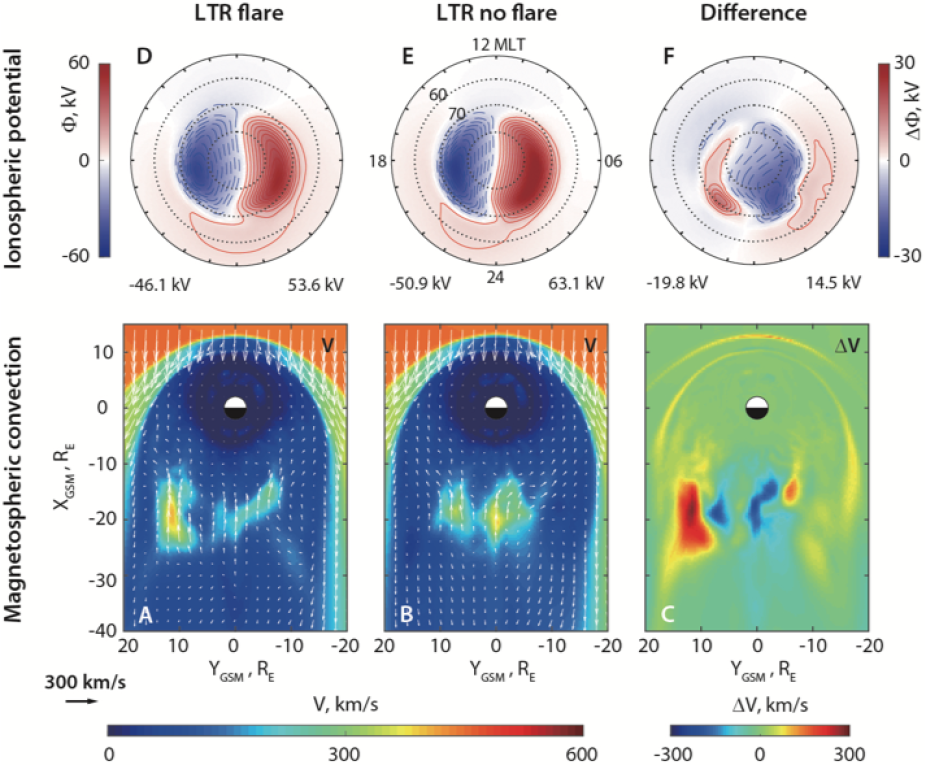Publication Name: AGU Advances; HAO Author: Jing Liu; Authors names as listed: Jing Liu, Wenbin Wang, Liying Qian, William Lotko, Alan G. Burns, Kevin Pham, Gang Lu, Stanley C. Solomon, et al.
Solar flares—a sudden eruption of electromagnetic radiation at the Sun—are known to have significant impacts on Earth’s upper atmosphere and ionosphere, but their collective effects on geospace as an integrated system have never been examined. We use a newly developed whole geospace model, combined with key observational data, to study the effects of the 6 September 2017 X9.3 flare on the geospace system.

Solar flare effects on magnetospheric convection and ionospheric potential. Comparison of 50-minute averages (12:02-12:51 UT) from LTR simulations of magnetospheric and ionospheric states on September 6, 2017 with and without solar flare effects. Bottom row: LTR-simulated magnetospheric convection velocity in equatorial plane (ZGSM = 0) with (A) and without (B) solar flare effects and their difference (C). Arrows indicate direction and magnitude (also in color) of the convection velocity projected onto the plane. Top row: High-latitude electric potential, essentially convection streamlines in the ionosphere with (D) and without (E) solar flare effects and their difference (F). The minimum and maximum potentials are labeled below panels (D-F).
The analysis shows that the solar wind-magnetosphere interaction, magnetotail, field-aligned current distribution, auroral precipitation and high-latitude ionospheric convection respond to atmospheric absorption of solar flare radiation. This study, for the first time, demonstrates that a rapid and large increase in the iono-spheric E-region photoionization due to a solar transient event globally modifies the electrodynamic cou-pling of the geospace system.